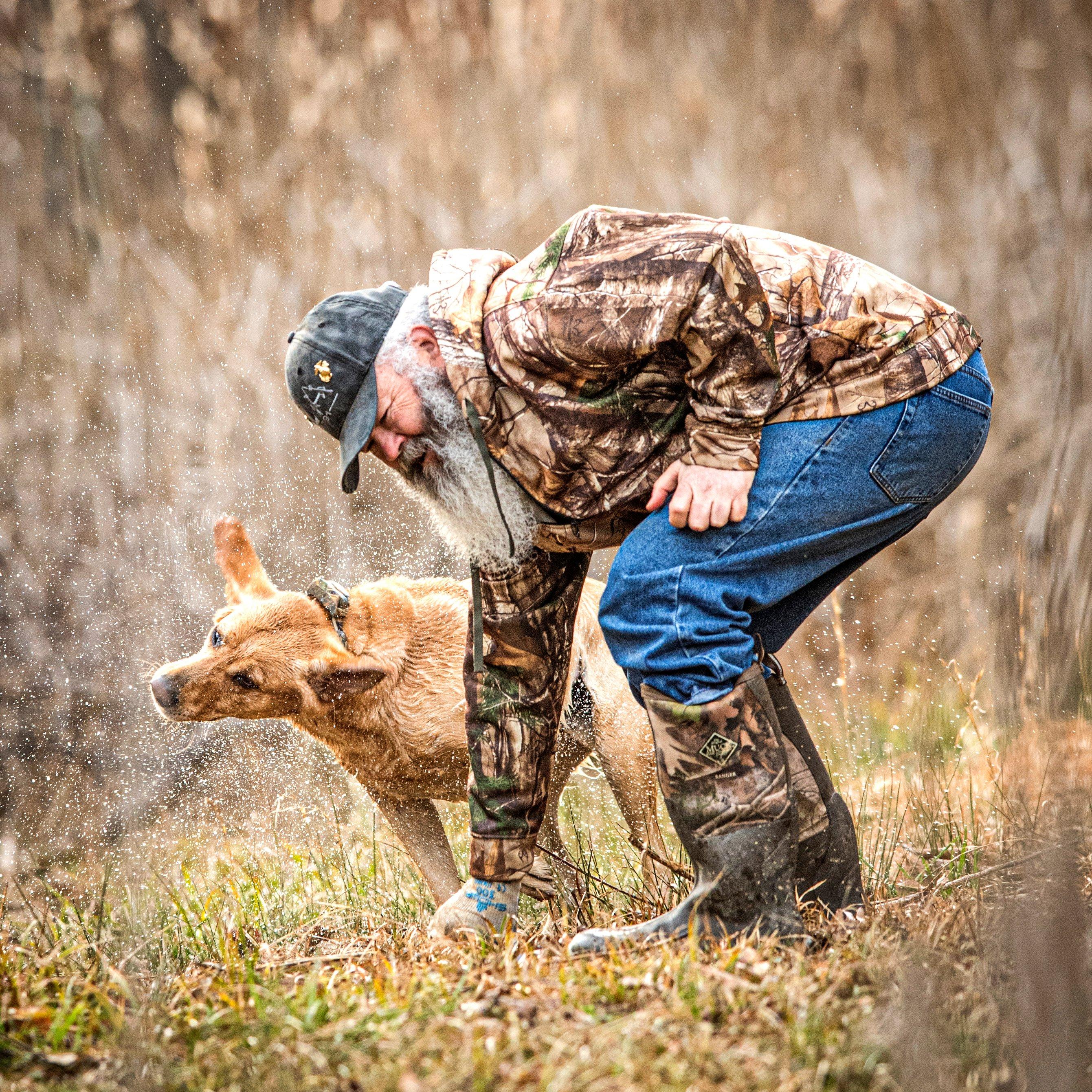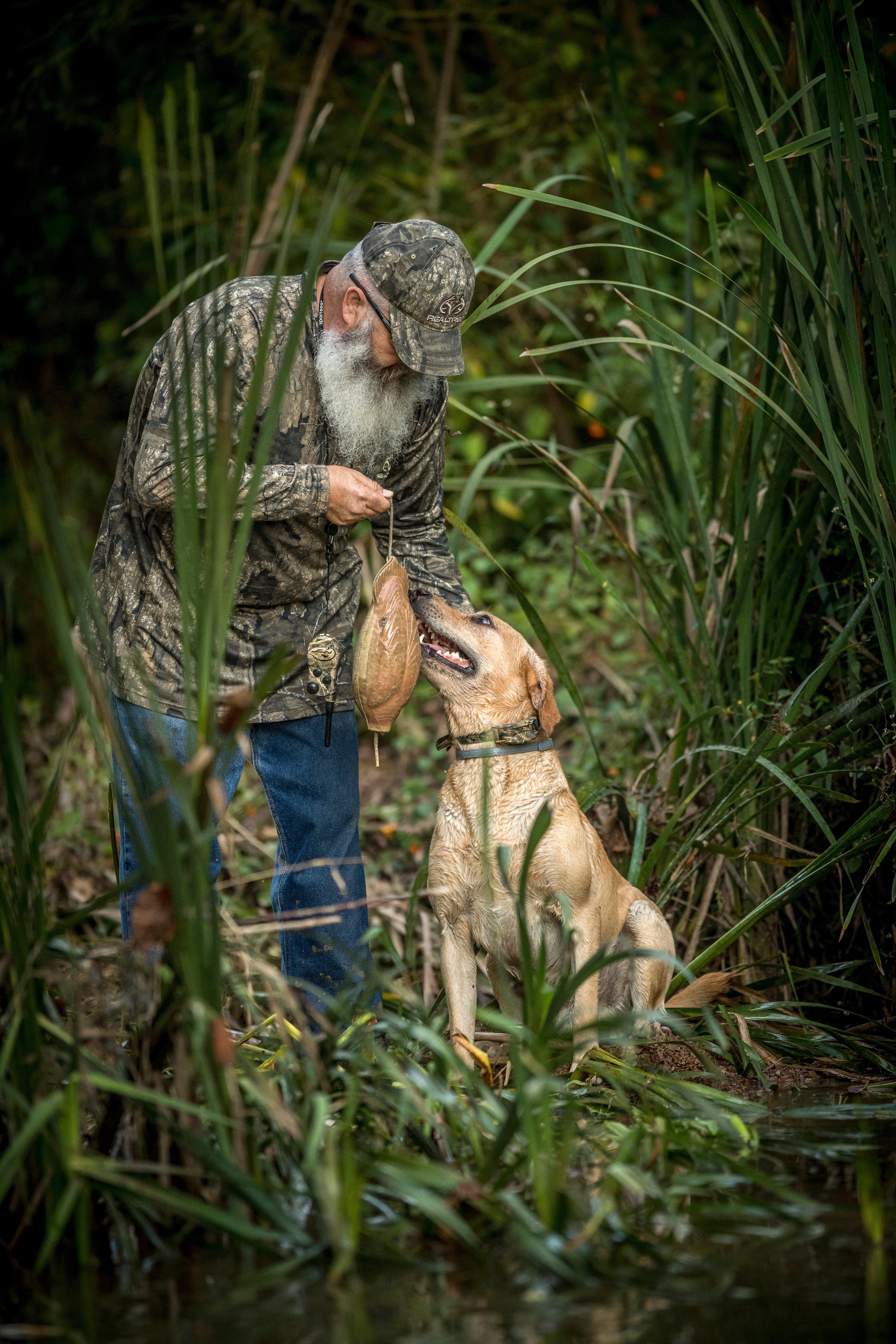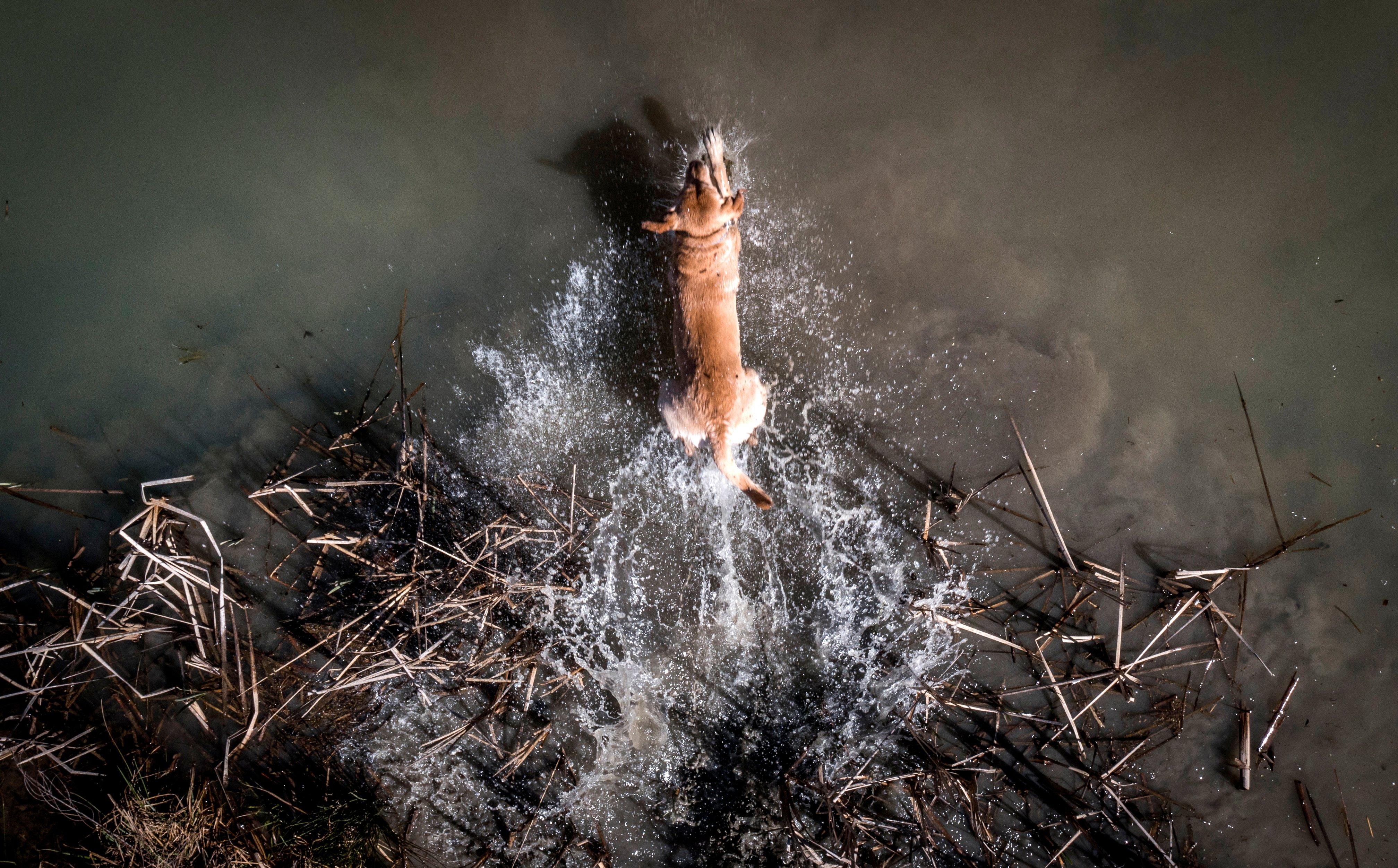Misbehaving retrievers seem to thwart your best training efforts. But top pros say you might want to look in the mirror before cussing your dog

A lot of what’s perceived as stubbornness results from early training miscues or oversights. Photo by Bill Konway
You wait for it every year. As dawn breaks on opening day, shots ring out nearby and the show begins.
“Wait… no!” Splash. (Muffled cursing.) “Here. Here. No. Here! Heeeeeeere!” (Exasperated groan; not-so-subtle cursing.)
Later that morning at the landing, the poor dog owner might apologize. “I don’t know what his problem is today. He never acts like this. He’s just stubborn.”
Any retriever trainer can relate, as dealing with our favorite canine companions can sometimes be challenging. From simple gaffes and frustrating plateaus in training to what might seem like outright defiance, dogs don’t always perform like we expect them to. That often prompts us to label them as being difficult or obstinate.
But if you ask top retriever trainers, the problem usually lies elsewhere. So if your duck dog is a “stubborn monster,” here are some tips on how to train him — and improve yourself.
Don’t Miss: THE PIT BOSS RULES
Defining and Avoiding the Problem
The real key to training a stubborn retriever is to avoid the problem by setting the proper groundwork before a dog can develop bad behavior.
“At a young age, let him know who the boss is and who controls everything,” said Jared Mophett, noted retriever trainer and head guide and habitat manager at Honey Brake Lodge in Louisiana. “You must be stern on that. You must let them know that you run the show. You do what I tell you to do, and you do it the first time. And that starts at a young age.”
Tom Dokken, owner of Dokken’s Oak Ridge Kennels and founder of Dokken’s Dog Supply, said most problems arise during basic obedience training during the first months of a dog’s life. Every new puppy is a clean slate. They only develop bad habits in response to stimulus.
“Often, stubbornness depends on where you’re at in your training,” he said. “You might say the dog is stubborn, but a lot of times, stubbornness is misinterpreted because the dog is not sure what to do. If you don’t get the right response, the tendency is to put pressure on the dog. What can happen is they’ll just tighten up, and then they look like they’re more stubborn, and then you increase pressure.”

If your dog develops habits that make it seem stubborn, go back to early obedience drills, and be prepared to enforce every command when it’s given. Photo by Bill Konway
Dokken said trainers should start lightly but make sure a pup understands what’s being asked of it, whether that involves sit, stay, come, place, or other commands. A good progression is to start with teaching, followed by lots of repetition, with discipline as the last stage.
“Basic obedience is where the stubbornness really comes from in the first place,” Mophett said. “A lot of stubbornness comes from the trainer. You sped up too fast and didn’t get it correct in the first place. Make sure they get it and understand 100 percent correctly what you want them to do. And in your training and repetition, you have to let them know that you’re the boss and that when I tell you to do something, you have to do it at that moment.”
Getting lax with that hard-and-fast rule lets trouble creep in. When a pup doesn’t comply with a command but isn’t corrected, it’s essentially learned that behavior is OK. “You’re rewarding them for not doing it right,” Mophett said. “The first time you said ‘sit’ and the dog stood up and got away with it, he says, ‘I didn’t have to sit.’ When you told him ‘here’ and he was over there smelling something, he got away with it.”
Sometimes trainers have good intentions but merely get sloppy with commands and reinforcements. “If your dog knows the basic commands, don’t give a command you aren’t in position to reinforce right then,” Dokken said. “We’re the biggest problem in the whole thing.”
Don’t Miss: 5 WHITE LIES HEARD IN THE DUCK BLIND
Correcting Problems
Let’s say — like many retriever owners — you made some missteps during basic training, and your dog develops behavior problems that make it seem stubborn or difficult. Dokken and Mophett said the solution lies with a simple review of the basics and daily follow-ups at home or in the field.
“It starts as easily as saying, ‘You can’t go out the door until I tell you to go out,’” Dokken said. “When I put your food down, you have to wait until I say OK. That’s just little stuff, but it gets you into thinking about control and gets your dog into knowing who’s in control. It’s not extremely hard. It just requires consistency.”
Mophett agreed, saying trainers must constantly watch for seemingly insignificant mistakes, as “little problems” often morph into big ones. “You’ll have to revisit that training in a lot of situations, whether it’s a hunt test, field trials, or duck hunts,” he said. “If you see a problem, you go back and fix it. You don’t let it keep progressing. If they break, you have to fix it then. You might have to back up and fix that problem before another problem comes. But you have to fix those problems when they occur. You can’t keep putting them off. It’s not a sprint, it’s a marathon, and a dog’s whole life and career involve training.”
In fact, Mophett revisits the basics with his advanced dogs, conducting 2-minute obedience drills — sit, heel, here, and other commands — before running them in field trials. “Revisit them once a month or more, and tighten them up on those,” he said. “The main thing is to keep your dog conditioned. Touch it up. Don’t wait till the opening day of duck season and expect that dog to not be stubborn and listen to everything you say. They get rusty.”
Dokken said even ultra-simple drills, such as those you conducted when a pup was very young, can help correct experienced dogs that exhibit problems. “Your dog might know the come command, but you’ll say, ‘He just doesn’t do it when I tell him to,’” he said. “You’re telling me the dog already knows the command. You can go all the way back to putting a 6-foot leash on him, and working on heeling, stay, and come with that leash. Then you can progress to a check cord. And then we lay the remote collar over the top of all that obedience.”
Of course, at some point when correcting a dog, trainers might wonder how much pressure — whether via a heeling stick, choke collar, or e-collar — is sufficient for correction and what level is too much. “Gradually work your way up till you see that compliance,” Dokken said. “They’ll tell you by their actions when you hit that level. Basically, with any animal, when you find the level when you have their attention correction-wise, he’ll want to avoid that correction by compliance. And then praise is thrown on top of that compliance. That’s a win for the trainer and the dog.”

When working with young dogs, focus on obedience. Tolerating small bad habits can lead to larger problems. Photo by Bill Konway
Not Just for Show
Some duck hunters might allow stubborn misbehavior because they figure their retriever is good enough to bring back a few ducks and will never be perfect. Experienced trainers can admittedly get a bit geeky about compliance, but they say that for a very good reason (refer to the scenario in paragraphs two and three above).
“In the guide world, your dog has to be very well conditioned, with great obedience and a good demeanor,” Mophett said. “You have to be in control at all times. That’s looking out for the hunters and your hunt. There are safety issues. A dog has to be very confined. He has to want to work for you, please you, and be obedient. A dog can make the hunt or break the hunt. And dogs are going to be dogs. Some of them are going to try you. If they can get away with it, they’re going to get away with it.”
Dokken agreed, saying a continual emphasis on the basics and remedial training as needed makes life easier for dogs and trainers, and that it’s part of the continuing journey through a retriever’s life. “Even with our trainers who work for us, we’ll say if you’re having a problem, just step back and say, ‘What am I doing?’” he said. “If the dog keeps making the mistake, there’s something that we’re doing that we need to change. Bad habits, once you let them go, are just like weeds. If you cut them off at the surface, they’re always right underneath the surface. You have to continue to mow them down to keep them at bay.”
And by doing so, you’ll have a better retriever and become a better trainer, which will lead to more ducks and far more pleasant experiences afield.










